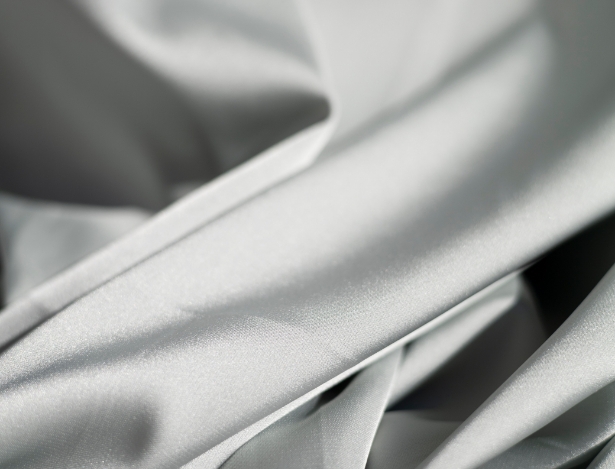Silk Vs Satin- Are they the same?

Many people often get confused when talking about silk and satin. While they look and feel quite similar, they in fact are different.
Let’s break it down!
Silk is a natural protein fibre produced by a range of insects as well as arachnids. Most commonly though, silk is obtained from mulberry silkworm Bombyx Mori, in a process known as sericulture. Degumming is one crucial step in silk making that gives silk its distinct soft touch, lustrous shine and rich colour that we are familiar with.
In comparison, satin is a type of weave. It can be made from a variety of fibres including polyester, nylon and cotton. While silk fibres can be woven into a satin finish too, it is less common these days. Typically when we talk about satin, we refer to polyester satin. Essentially, these long filament fibres are woven ultra tightly, in a specific pattern, yielding a glossy sheen on one side, and a dull surface on the back side.
Price
You may notice that satin items are significantly cheaper than silk items. This is because satin often uses synthetic fibres which are more readily available and easier to produce in masses. On the other hand, silk is composed of natural fibres, and requires a meticulous process of farming and harvesting the silkworms as well as special treatment of the delicate fibres. The production of silk demands long labour, resources and time, which is why silk is more expensive.
While choosing satin may save you some coin, it lacks certain unique capabilities that only silk offers, including temperature regulating and hypoallergenic properties. You may find that the plethora of hair and skin benefits silk offers, outweighs its higher price point.
Temperature Regulation & Breathability
One of the major advantages of silk is its natural temperature regulating properties. Silk works effectively in removing excess heat to keep you cool in hotter weather or creating a layer of insulation between you and the fabric, when the temperature drops.
In contrast, since polyester is essentially plastic fibres, derived from petroleum, polyester satin is not very breathable. It may be cool to the touch initially, but it does not absorb sweat or moisture well, leaving you feeling hot and sticky in hotter temperatures.
Hypoallergenic qualities
What’s great about silk is that it is naturally hypoallergenic, making it an ideal choice for individuals suffering sensitive skin, eczema or allergies. Silk is free from the chemicals and synthetic materials that can often cause irritation or allergic reactions.
Satin, on the other hand, is a synthetic fabric typically made from polyester, nylon, or rayon. Satin is not inherently hypoallergenic and may cause irritation or allergic reactions in some individuals. Polyester satin, in particular, can be problematic for people with sensitive skin, as the synthetic fibers can trap moisture and heat, leading to irritation and rashes.
So, is one better than the other?
If we’re talking about bedding, such as pillowcases, we would recommend spending a little extra to purchase natural silk pillowcases. Silk is gentle on the skin and slightly less absorbent than other textiles, keeping your vital skincare and natural oils on your face, where they belong. Silk is also naturally temperature regulating and hypoallergenic. It’s smooth construction reduces friction on the hair, minimizing frizzy hair and tangles.
However, polyester satin has its fair share of benefits too. It’s easier to care for and is a more affordable option. It’s smooth to touch like silk, allowing hair to glide across, as well as preventing sleep creases.
But all in all, it comes down to your personal preference, as well as how much you are willing to spend!